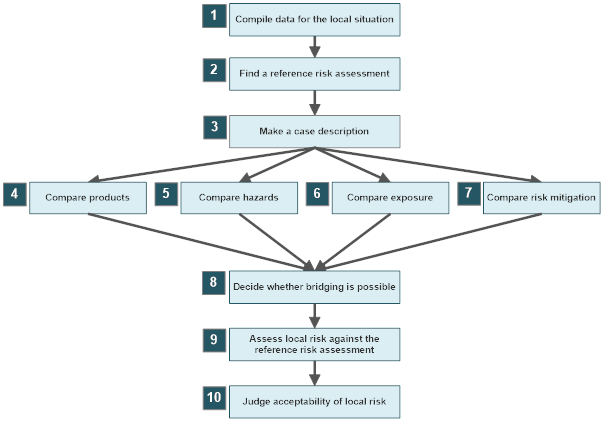General guidance on bridging of pesticide risk assessments - Process and steps
3. Process of bridging a risk assessment
Depending on the type of risk that needs to be evaluated (e.g. occupational, dietary, aquatic, pollinators), the assessment process is slightly different. Nonetheless, most bridging risk assessments generally follow the steps described below. More details about specific bridging assessments are provided in the Toolkit, in the Assessment Methods module.
Bridging of a risk assessment generally observes the following steps (Figure 2):
Prepare
- Compile the data for the local case under review
- Find a reference risk assessment
- Make a case description
Compare
- Compare the pesticide products
- Compare the hazards
- Compare the exposures
- Compare the risk mitigation measures
Conclude
- Decide whether bridging is possible
- Assess whether the risk in the local situation is similar, lower or higher than in the reference assessment
- Judge whether the risk in the local situation can be considered acceptable

Figure 2. Schematic process of bridging a risk assessment
